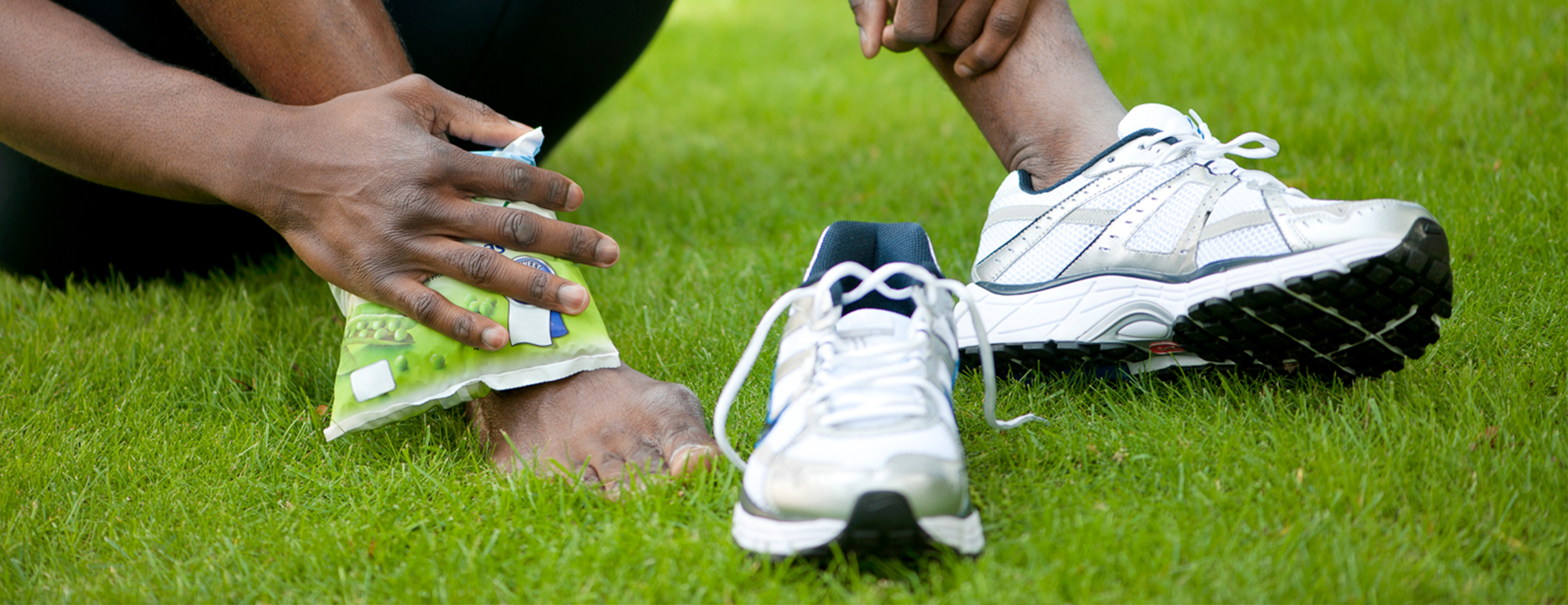
Treating Ankle Injuries
Ankle sprains are the most common ankle injury among regular athletes and weekend warriors. The top orthopedic complaint, sprains occur in an estimated 27,000 Americans a day.
Many athletes, however, who suffer from ankle sprains tend to play right through their injury, which can lead to lifelong problems with recurring sprains, unstable joints, arthritis-like pain or other complications like tendon or cartilage damage. And the earlier in life a sprain occurs, the higher the chance of recurrence. Therefore, it's important to properly treat initial sprains, especially in young athletes.
If you sprain your ankle and it hurts to run, you should sit out the rest of the game. Once a sprain has occurred, follow these three steps to help you recover:
Step 1: RICE
Follow the instructions represented by the acronym RICE as often as possible for three days. RICE stands for rest, ice, compression (with an elastic ankle wrap) and elevation (toes above the nose). For significantly swollen ankles or if limping persists for more than three days, you should see a doctor.
Step 2: Rehabilitation
To prevent permanent damage to the ankle, take steps to achieve better range of motion (flexibility), balance and strength. Many of these exercises can be done at home.
Range of motion exercise
Place one foot on a stairway step. Allow the back heel to stretch downward over the edge of the step. Hold each foot in this position for 30 seconds.
Balance restoration exercise
Stand on one leg with your eyes closed. Gradually build up to standing 30 seconds on each leg. Repeat three times.
Strength exercise
Lie on your side on the sofa, with the upper leg hanging over the edge. Place the top of your foot through the handles of a plastic shopping bag filled with one to two pounds of weight (one or two cans of soup). Slowly lift your toes toward the ceiling and hold for three seconds. Repeat 10 times.
Step 3: Supportive devices
When back to playing sports, previously injured athletes should probably wear an ankle brace, no matter how much they have rehabilitated their ankle or how good their sneakers. An injured ankle will never have the same support again, so a brace should be considered.
Step 4: If pain continues
For ankle pain and significant instability that persists despite adequate rehabilitation or physical therapy, you should see a doctor for further evaluation. You may have injured the cartilage or tendons in your ankle, which may require special testing.
UCSF Health medical specialists have reviewed this information. It is for educational purposes only and is not intended to replace the advice of your doctor or other health care provider. We encourage you to discuss any questions or concerns you may have with your provider.







